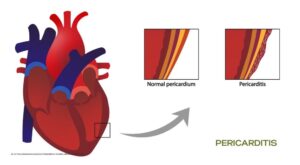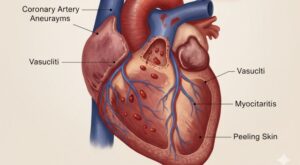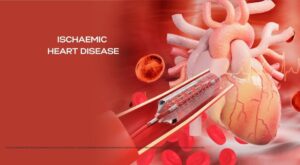When Breath Fights Back: The Story of Asthma

Asthma is not just a breathing problem — it’s a chronic condition that affects millions of people across the world. Characterized by airway inflammation and bronchial hypersensitivity, asthma can significantly impact day-to-day life. With proper understanding and care, most people with asthma can lead active, fulfilling lives.
What Is Asthma?
Asthma is a chronic respiratory disease that causes the airways (bronchial tubes) in the lungs to become inflamed and narrowed, making it difficult to breathe. It is often triggered by allergens, pollution, exercise, cold air, stress, or infections.
When someone with asthma encounters a trigger, their immune system overreacts, causing:
- Inflammation in the airways
- Increased mucus production
- Tightening of the airway muscles (bronchoconstriction)
This trio of reactions leads to asthma attacks — periods of wheezing, shortness of breath, chest tightness, and coughing.
Is Asthma a Genetic or Environmental Condition
Asthma is often the result of a complex interplay between genetic predisposition and environmental exposures. A family history of asthma or allergies increases one’s risk, but external factors such as pollution, smoking, early respiratory infections, or occupational exposures play a significant role in triggering or worsening the disease.
Common Asthma Symptoms
Asthma symptoms may vary from mild to severe, and from occasional to persistent. Recognizing the early signs can help prevent a full-blown attack.
Most common symptoms include:
- Shortness of breath, especially during exertion or at night
- Wheezing — a whistling or squeaky sound while breathing
- Coughing, particularly at night or early morning
- Chest tightness or pressure
- Increased sputum or mucus production in some cases
- Trouble sleeping due to breathing difficulties
In children, persistent cough and difficulty keeping up with peers during play may be early signs.
What Triggers an Asthma Attack?
Asthma triggers vary by individual but often include:
- Airborne allergens (dust mites, pollen, pet dander, mold)
- Air pollution and smoke
- Colds and respiratory infections
- Exercise, particularly in cold or dry environments
- Stress or strong emotions
- Certain medications, like NSAIDs or beta-blockers
- Weather changes, especially cold or humid air
- Gastroesophageal reflux disease (GERD)
How Is Asthma Diagnosed?
A combination of clinical history, lung function tests, and response to medications helps diagnose asthma.
Common diagnostic tools:
- Spirometry – Measures how much air you can exhale and how quickly
- Peak Expiratory Flow (PEF) – Daily monitoring for asthma control
- Methacholine challenge test – Confirms airway hyperreactivity
- Allergy testing – Identifies potential triggers
How Do You Treat Asthma?
There is no cure for asthma, but it can be effectively managed with a combination of medication, lifestyle modifications, and regular monitoring.
1. Quick-Relief (Rescue) Medications
Used during asthma attacks or when symptoms arise.
- Short-acting beta agonists (SABAs) like salbutamol
- Anticholinergics (in some cases)
2. Long-Term Control Medications
Used daily to prevent symptoms.
- Inhaled corticosteroids – Most effective long-term controller
- Long-acting beta agonists (LABAs) – Often used in combination with steroids
- Leukotriene modifiers – Useful in allergic asthma
- Theophylline – A less commonly used oral bronchodilator
3. Biologic Therapies
Used in severe asthma not controlled by standard treatment.
- Monoclonal antibodies like omalizumab (anti-IgE) or dupilumab
Lifestyle Management and Self-Care
Asthma care doesn’t stop at inhalers. Self-awareness and control strategies improve quality of life and reduce hospital visits.
Self-Care Tips:
- Use a peak flow meter to track lung function daily
- Avoid known triggers
- Maintain good indoor air quality — HEPA filters, no smoking
- Get vaccinated against influenza and pneumonia
- Manage stress and practice relaxation techniques
- Adhere to treatment plans even when symptom-free
Exercise and Asthma:
People with asthma should not avoid exercise. With proper pre-medication and warm-ups, physical activity is not only possible but beneficial.
Asthma in Children
Asthma is the most common chronic disease among children. Management includes:
- Child-friendly inhalers with spacers
- Avoiding cold drinks and allergens
- Educating caregivers and school staff
Asthma in Older Adults
Older adults may experience worsened symptoms due to other medical conditions (e.g., heart disease). Diagnosis is sometimes confused with COPD (Chronic Obstructive Pulmonary Disease). Medication tolerance also varies with age.
Asthma, when left unchecked, can limit life. But when monitored and managed proactively, people with asthma can lead completely normal, active lives.
Early diagnosis, consistent treatment, trigger avoidance, and patient education are the pillars of asthma care.




